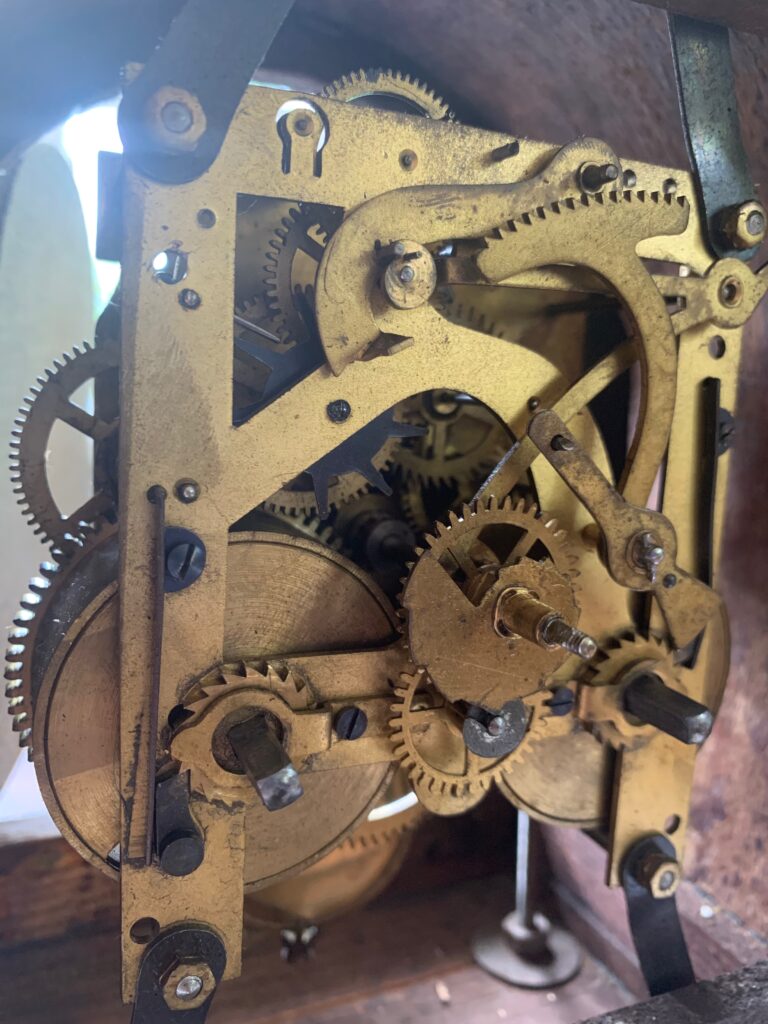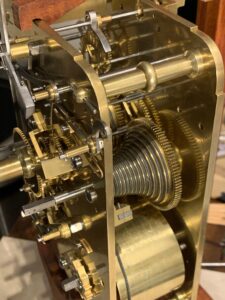Longcase clocks (grandfather clocks)
Longcase clocks make very grand and impressive pieces of furniture, but if they are not running then the story does not quite work. If your clock has a traditional brass dial, the chances are it was made in the 1700s. It is often a surprise how old grandfather clocks are, especially as they usually change hands for less than £1000. Such clocks are obviously very attractive talking points when they are working, and they keep exceptionally good time, too. These are definitely worth restoring – and especially so, if the clock has been in the family – but you may not get all of your money back on the costs of the repair if you are planning to restore it for sale. The market is very full of such clocks and buyers have a great advantage. The chances are this situation will not last forever, as numbers are gradually dwindling.
Cheaper longcase clocks were made in the later half of the 1800s, and sometimes the workmanship is not great. Clocks with painted white dials can need an artist’s help to restore, and if the dial has been cleaned by accident with a fluid that dissolved any lettering, this is likely to be expensive to do. The quality of the case and any losses (e.g. wood worm) also have a bearing on value.
Later 20th century clocks (typically with a Hermle movement) do not have any value as such, as their movements are designed to be disposable and are generally difficult to repair – it can be better to replace them.
Mantel clocks
Before the advent of quartz movements, everyone needed to know the time and mantel clocks were functional as well as decorative. Some were very well made luxury goods, but others were often built quite cheaply to bring time keeping to everyone who needed it. There are many old clocks in circulation, and especially the mass-produced ones from the last 100 years, often with gongs or even Westminster chimes.
Repairing and restoring an old mantel clock which was mass produced still takes time, and sadly it is often not cost-effective work if the objective is to increase its value. Being realistic, unless such a clock has sentimental value having been passed down the generations, the effort of restoring it will not be much help preparing it to sell. The market is flooded with this kind of movement:

If the parts look flimsy, and made by a machine, the clock is probably mass produced and less historically interesting. Of course, it may be inside a very impressive case, and this is something that could justify keeping it going!
On the other hand, many luxurious, hand-made clocks from the Victorian period are very worthy of restoration, and can be valuable. Bracket clocks and fusee clocks can be very sought after, and were boutique items made by individual clock makers. If you have such a clock, it is worth looking after as the market for these is very good. Here’s a bracket clock double fusee movement from 1830 which is absolutely fantastic to look at, and also rather valuable:

If you’re not sure what your clock is, or when it was made, then you might be unsure if it is worth restoring. I’m happy to give you my opinion or help you date your clock. If it has sentimental value, having belonged to a relation, then this should really guide your decision!